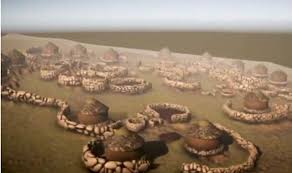
Kweneng, The ancient lost city of South Africa have been rediscovered by Archaeologists.
The Suikerbosrand National Park has being a study site for researchers of the University of Witwatersrand for decades without any success.
Not until the cutting-edge laser technology known as LiDAR (Light Detection and Ranging) became available in recent years that they were able to study the ruins and discovered that what they thought was only a scattering of ancient stone huts , turned out to be a veritable city.
LiDAR essentially employs lasers to measure distances to the earth’s surface which is especially useful when surveying areas with thick ground cover.
The 200 years old city (Kweneng) was an ancient site, located beneath dense vegetation at the park. Archaeologists used billions of lasers to penetrate through the vegetation and digitally recreated an image of how Kweneng once looked.
Kweneng was one of several large settlements across northern parts of what is now South Africa that were inhabited by the Tswana-speaking peoples for many centuries before the first European settlers arrived.
Many of these settlements leave desolate but not entirely depopulated in violent turbulence at the beginning of the 19th century.
The city is believed to have gone into decline after civil conflict.
Researches have known about the city of Kweneng for decades, but they did not realize its actual size until recent times.
The laser technology has revealed its true scope , The city appears to have been split into three main neighborhoods ( Central District, South-East District, Southern District) spread over 20 sq km (8 sq miles), with two very large stone walled enclosures.
The exact date for the end of Kweneng’s days is not certain, as recent archaeological techniques are not accurate to get such ancient dates. But the final days of the city have May been fearful and violent.
The emergence of this lost city is filling in a huge historical gap, especially for South Africans.

